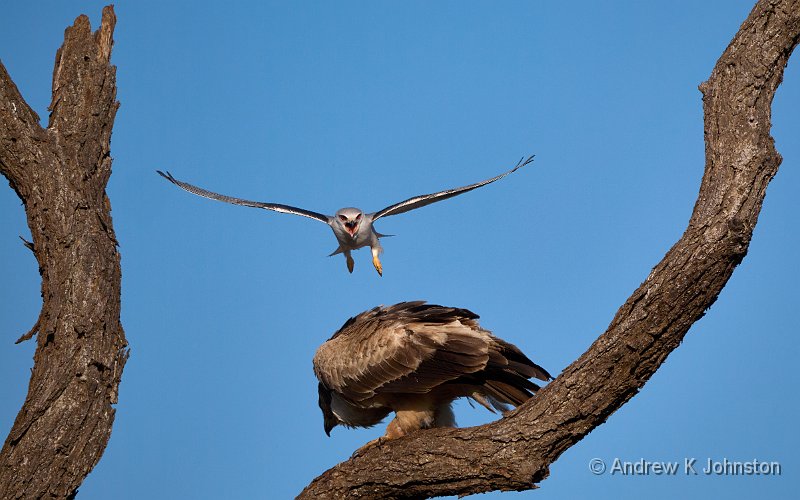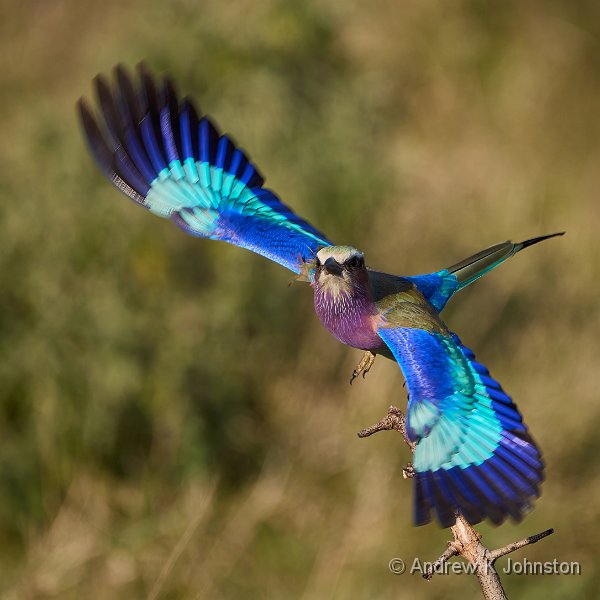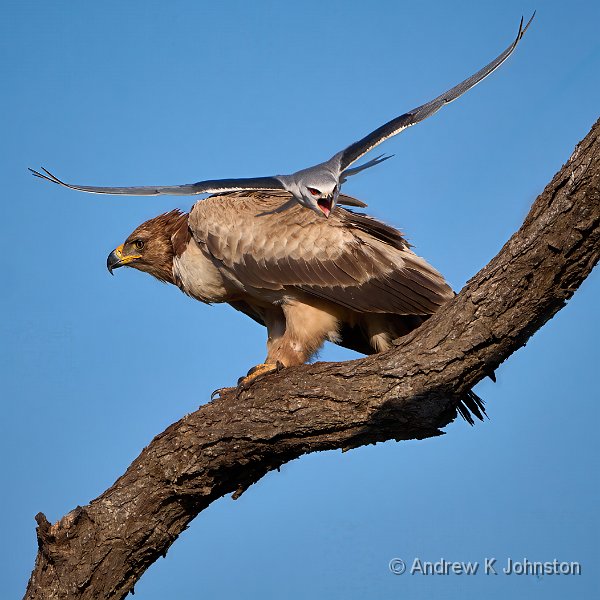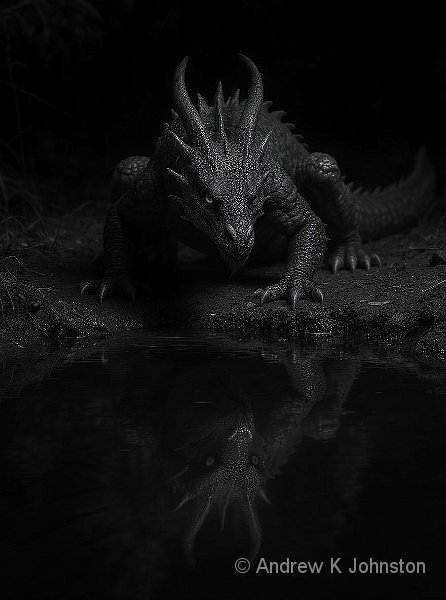
| Tawny eagle and black-winged kite, Zaminga | |
| Camera: Panasonic DC-G9M2 | Date: 17-06-2025 15:42 | Resolution: 4804 x 3002 | ISO: 160 | Exp. bias: -33/100 EV | Exp. Time: 1/1600s | Aperture: 5.4 | Focal Length: 250.0mm (~500.0mm) | Location: Zaminga | State/Province: Thembalethu, KwaZulu-Natal | See map | Lens: LEICA DG 100-400/F4.0-6.3 | |
After the frustrations and ultimate disappointment of the previous night hide session, I demur from another and after lunch wave goodbye to John and Colin before joining another group, with Calvin as guide, for an afternoon game drive.
I Discover Pre-capture
Although it’s targeted as "anything you’ve missed so far", the drive turns into a birding session, which is a great opportunity to exercise the newly-discovered pre-capture capabilities of my camera. In action photography, especially sports and wildlife, there’s a common challenge of anticipating the action, for example a bird taking off, so you capture it. Typically if you wait until you can see something happening, it’s too late. Over the years an awful lot of film and digital images have been wasted, left empty while the bird has, literally, already flown.
The latest generation of higher-spec cameras resolves this with "pre-capture". If you sit with a high frame rate selected, your subject in focus and the shutter halfway down, as well as updating the viewfinder display the camera is writing images to a rolling buffer. When you finally press the shutter all the way, it starts by writing the last half a second or so of images while it continues to capture new images in real time. After the event you should have a sequence including the peak of the action.
This does come at a cost. There’s a lot of processing going on, and if the action is delayed long enough you can see the battery’s reserves running down as you watch. If you use the feature regularly it uses a lot of storage, and that storage needs to be fast unless you want a significant delay before the camera is usable again. The Panasonic G9ii again delivers benefits from its smaller sensor: most full-frame peers need very fast CF Express cards and are still JPEG-only at higher frame rates. The G9ii delivers RAW+JPEG at up to 60 fps, although I opt for 20fps which gives me a maximum burst of about 8s, and works acceptably with inexpensive cards like the Lexar Silver Pro V60 series.
The other challenge is that if your subject is patient enough then your supporting hand and your trigger finger get very tired. One of the "must have" shots from a trip like this is a lilac-breasted roller taking off, but a couple of us on the drive don’t yet have it. Calvin spots one sitting in a bush and manoeuvres the jeep close to it. Knowing that it’s not usually long before the bird takes flight, we sight up on it and wait.
And wait.
And wait.
We appear to have found either the most chilled, or the most full, or the laziest roller on the continent. After over 15 minutes it still hasn’t taken flight, although there is enough movement to confirm it’s still alive. We try everything to provoke a controlled take-off. We cough. We clap. Calvin turns on the engine. Calvin turns on the engine and moves the jeep a few feet towards the tree. Nothing.
Finally, when we’re taking it in turns to rest our hands, the bird suddenly flies. I’m lucky – I have just refocused after a short break, and I get a couple of wonderful shots of it in flight.

| Lilac-breasted roller in flight, Zaminga (Show Details) |
Once we’ve got a couple more shots of less-chilled rollers, we move on the corner of the male cheetahs’ domain, where a tawny eagle is sitting in one of the dead trees. We get a couple of good static shots, and suddenly all hell breaks loose when a black-winged kite, a fraction of its size, starts angrily "buzzing" it, flying close with beak open and claws out, so the eagle is forced to cower and then squawk back. We can only guess at the cause: maybe the kite has a nest nearby and is pre-emptively defending its young? We manage to photograph about half a dozen passes, then the kite gives up, and after a few minutes the puzzled eagle flutters away.

| Tawny eagle and black-winged kite, Zaminga (Show Details) |
The last target of the afternoon is the bee-eaters. These tiny, colourful insect-eating birds have a highly complex social structure based around a communal nest in a cliff facing the river. They are very skittish, moving quickly together at any perceived threat, which might be as little as one of use, 30m away, moving a camera too quickly. However with a bit of patience we each get some good shots.

| Bee eaters, Zaminga (Show Details) |
I mentioned how storage-hungry pre-capture is. I have done whole tours and come back with around 32GB of images. This afternoon, across about two dozen sequences, I capture more than that in less than two hours.
I Invoke the Dragon Gods
By dinnertime Colin and John have reported moderate success from the Tamboti hide. After dinner, in a somewhat drunken state, for a joke I get onto ChatGPT and generate and share a picture of a dragon at the watering hole.

| Dragon at the watering hole (Show Details) |
About an hour later Colin and John post a picture of three elephants at the watering hole, followed by reports of a couple more visits. This is without question the best overnight experience for the whole trip. I’m mildly peeved I didn’t partake, but also suspicious that if I had been there my impatience might have jinxed things. Congratulations, but don’t forget that I invoked the dragon gods to bring you luck!
 Thoughts on the World (Main Feed)
Thoughts on the World (Main Feed) Main feed (direct XML)
Main feed (direct XML)